Disclaimer
Alfred Sisley
French Impressionist Painter & Landscapist
1839 - 1899
Portrait of Alfred Sisley by Pierre-Auguste Renoir
.jpg)
Alfred Sisley was an English Impressionist landscape painter who was born and spent most of his life in France. Sisley is recognized as perhaps the most consistent of the Impressionists, never deviating into figure painting or finding that the movement did not fulfill his artistic needs.
Sisley was born in Paris to affluent English parents; William Sisley was in the silk business, and his mother Felicia Sell was a cultivated music connoisseur. At the age of 18, Sisley was sent to London to study for a career in business, but he abandoned it after four years and returned to Paris. Beginning in 1862 he studied at the atelier of Swiss artist Marc-Charles-Gabriel Gleyre, where he became acquainted with Frederic Bazille, Claude Monet, and Pierre-Auguste Renoir. Together they would paint landscapes en plein air (in the open air) in order to realistically capture the transient effects of sunlight. This approach innovative at the time resulted in paintings more colorful and more broadly painted than the public was accustomed to seeing. Consequently, Sisley and his friends initially had few opportunities to exhibit or sell their work. Unlike some of his fellow students who suffered financial hardships, Sisley received an allowance from his father-until 1870, after which time he became increasingly poor. Sisley's student works are lost. His earliest known work, Lane near a Small Town is believed to have been painted around 1864. His first landscape paintings are somber, colored with dark browns, greens, and pale blues. They were often executed at Marly and Saint-Cloud.
Lane near a Small Town: 1864-65
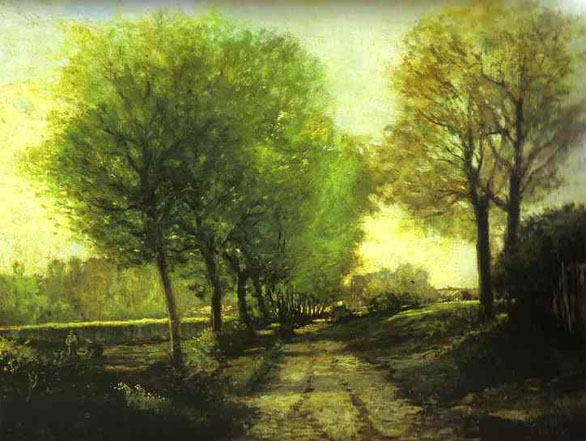
Fete Day at Marly le Roi
(Formerly The Fourteenth of July at Marly-le-Roi): 1875
_1875.jpg)
Flood at Port-Marly: 1876
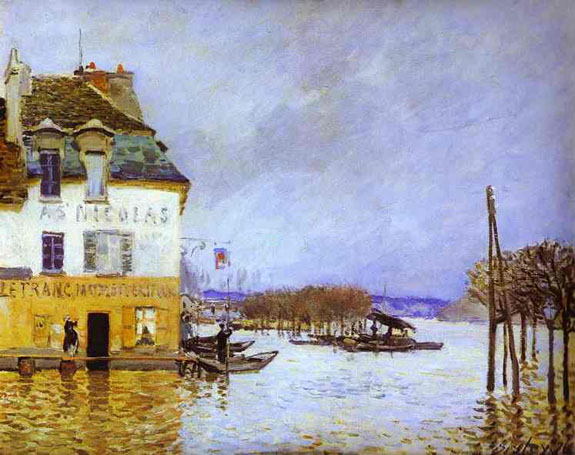
Sand on the Quayside Port Marly: 1875
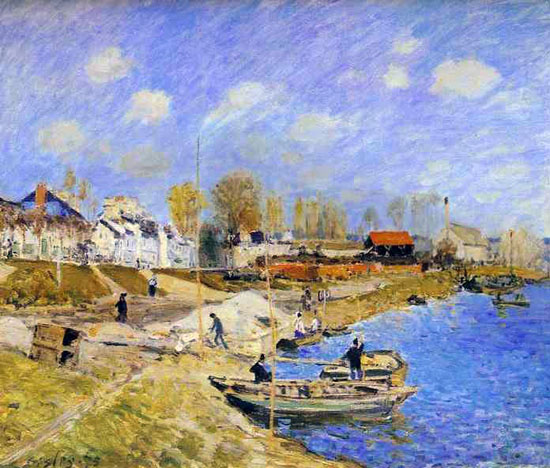
In 1866, he began a relationship with Eugenie Lesouezec (also known as Marie Lescouezec), a Breton living in Paris, with whom he had two children. His financial security vanished in 1870 when his father's business failed, and Sisley's sole means of support became the sale of his works. For the remainder of his life he would live in poverty; his paintings rose significantly in monetary value only after his death. In 1880 Sisley and his family moved to a small village near Moret-sur-Loing, close to the forest of Fontainebleau where the painters of the Barbizon school had worked earlier in the century. Here, as art historian Anne Poulet has said, "the gentle landscapes with their constantly changing atmosphere were perfectly attuned to his talents. Unlike Monet, he never sought the drama of the rampaging ocean or the brilliantly colored scenery of the Cote d'Azur."
Apart from the period spent in London between 1857 and 1861-and brief trips to England in 1874, 1881, and 1897-Sisley lived his entire life in France. Little is known about his relationship with the paintings of J. M. W. Turner and John Constable, which he may possibly have seen in London, although these artists have been suggested as an influence on his development as an Impressionist painter, as have Gustave Courbet and Jean-Baptiste-Camille Corot.
Among the Impressionists Sisley has been overshadowed by Monet, although his work most resembles that of Camille Pissarro. Described by art historian Robert Rosenblum as having "almost a generic character, an impersonal textbook idea of a perfect Impressionist painting", his work strongly invokes atmosphere and his skies are always very impressive. His concentration on landscape subjects was the most consistent of any of the Impressionists.
In 1897 Sisley and his partner visited Wales and were finally married in Cardiff Register Office on 5 August. The following year he applied for French citizenship but was refused, remaining English till his death. Sisley died in Moret-sur-Loing at the age of 59, just a few months after the death of his wife.
Among Sisley's best-known works are Street in Moret and Sand Heaps, both owned by the Art Institute of Chicago, and The Bridge at Moret-sur-Loing shown at Musee d'Orsay, Paris. Allee des peupliers de Moret (The Lane of Poplars at Moret) has been stolen three times from the Musee des Beaux-Arts in Nice. Once in 1978 when on loan in Marseille (recovered a few days later in the city's sewers) once in 1998 (in which the museum's curator was convicted of the theft and jailed for five years along with two accomplices) and in August 2007. On June 4, 2008, the French National Police recovered it and three other stolen paintings from inside a van in Marseilles, France.
Street in Moret
(Porte de Bourgogne from across the Bridge): ca 1888
_ca_1888.jpg)
Sand Heaps: 1875

The Bridge at Moret: 1893
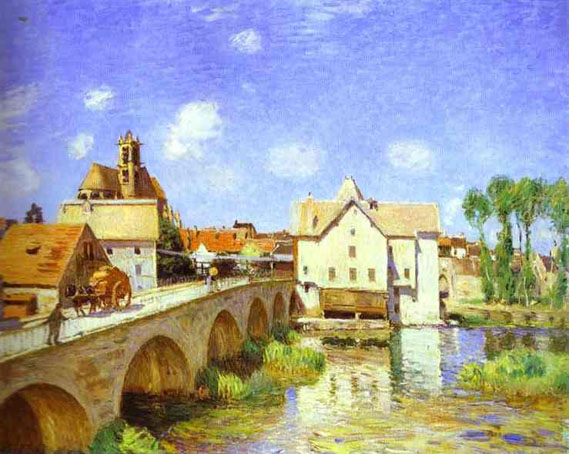
Lane of Poplars at Moret: 1888
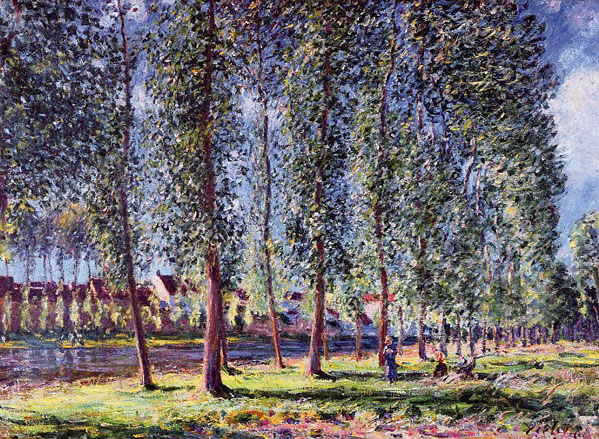
Barges in Billancourt
(Les peniches a Billancourt): 1877
_1877.jpg)
Boulevard Heloise Argenteuil: 1872
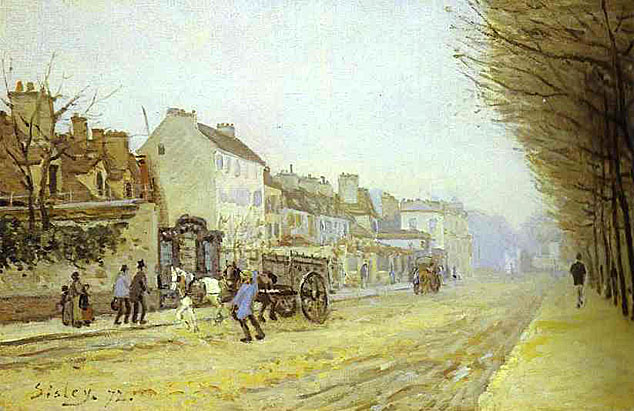
The town of Argenteuil on the Seine was less than a thirty-minute train ride from Paris' Gare Saint-Lazare. The river widened at Argenteuil, and it became a popular spot for boating and water sports, attracting industry as well. After Monet moved there in 1871, he often hosted colleagues like Sisley. Sometimes the two friends set up their easels side by side, as they seem to have done on the Boulevard Heloise. Argenteuil attracted well-to-do yachtsmen, but here it is the working town that Sisley records. He seems most concerned with its shapes and textures and the delicate colors of the pale winter sky. A softening of detail conveys the chill of a damp day. Of all the impressionists, Sisley was the one most committed to landscape and to the impressionist style in its most pure form, never abandoning, even temporarily, impressionism's goal of capturing the transient effects of light and atmosphere.
Bridge at Hampton Court: 1874

Bridge at Villeneuve-la-Garenne: 1872
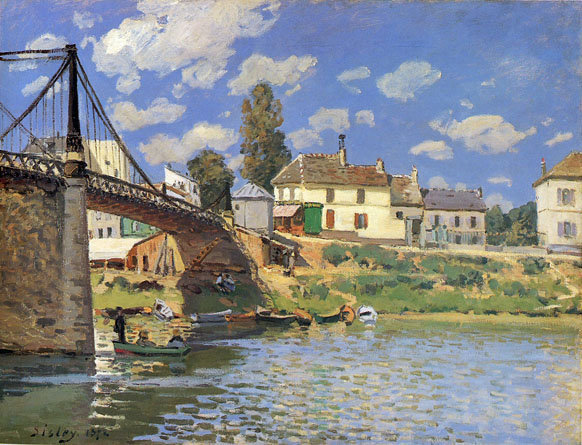
Recently built, state-of-the-art bridges, emblematic of modernity, recur as motifs in Impressionist paintings of the 1870's and 1880's. The cast-iron and stone suspension bridge at Villeneuve-la-Garenne, constructed in 1844 to connect the village with the Paris suburb of Saint-Denis, appears in two paintings executed by Sisley in 1872, this one and a version at the Fogg Art Museum, Cambridge, Massachusetts. Sisley's application of separate colors of paint in flat, rectangular brushstrokes—notably in the reflections on the water's surface—and his high-keyed palette are typical of early Impressionist works.
Bristol Channel from Penarth Evening: 1897
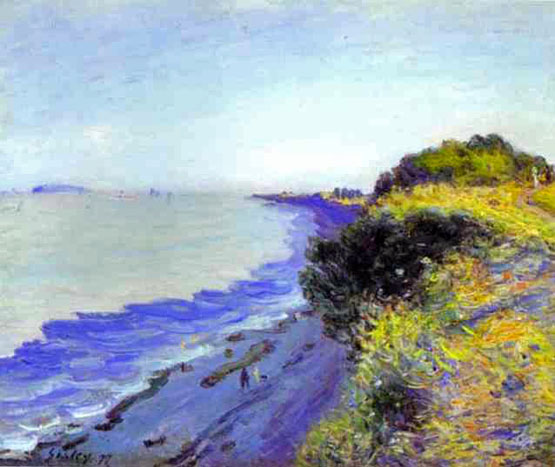
Brucke im Bau
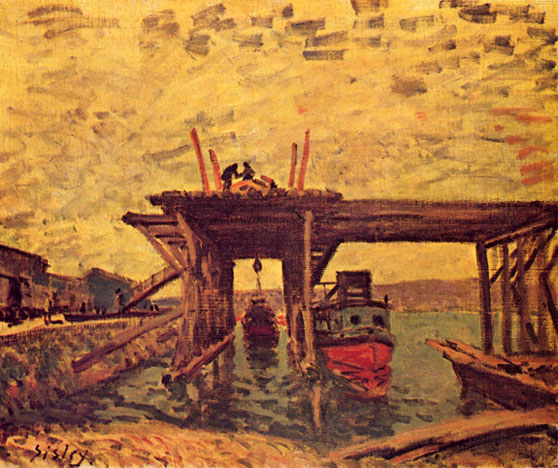
Chemin de la Machine Louveciennes: 1873
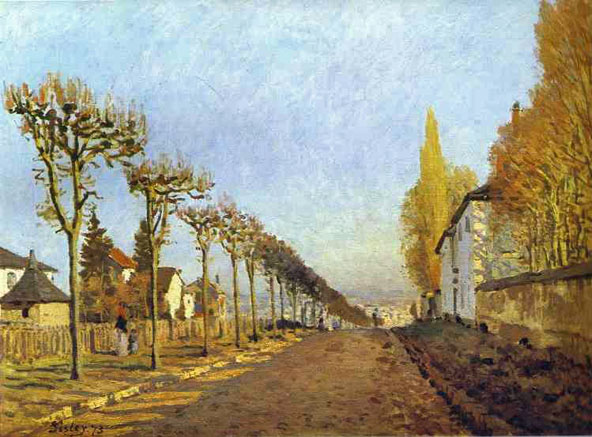
The road disappearing into the distance is one of Sisley's favorite themes. It often links the foreground with the background, and helps "pierce" the space, resulting in some very successful perspective effects. Here, the illusion of three-dimensional space is particularly spectacular thanks to the road stretching into the distance, perpendicular to the surface of the painting. The row of trees gives rhythm to the composition, and accentuates the impression of depth, while an interplay of lines is achieved through the vertical trunks, echoed by the horizontal lines of the shadows. The slight rise in the road is used to create a vanishing point slightly off centre, and to obtain a plunging view over the sunlit background. This structure allows the painter to organize the space in his landscape, while maintaining the tiers of the different planes. Finally, as was often the case, Sisley humanizes his landscape by introducing a few small figures in the style of Jongkind.
The Chemin de la Machine, Louveciennes, is reminiscent of the famous Avenue of Middelharnis (London, The National Gallery) painted by Hobbema in 1689 which Sisley had seen when he stayed in London as a young man. But other influences can be detected in this painting. The sense of the construction is without doubt a legacy from Corot, while the predominance of the sky comes from the 17th century Dutch landscape masters like Ruysdael. However it is the luminosity of the countryside of the Ile-de-France that Sisley captures so magnificently.
Courtyard of Farm at Saint Mammes: 1884

Early Snow at Louveciennes: 1871-72
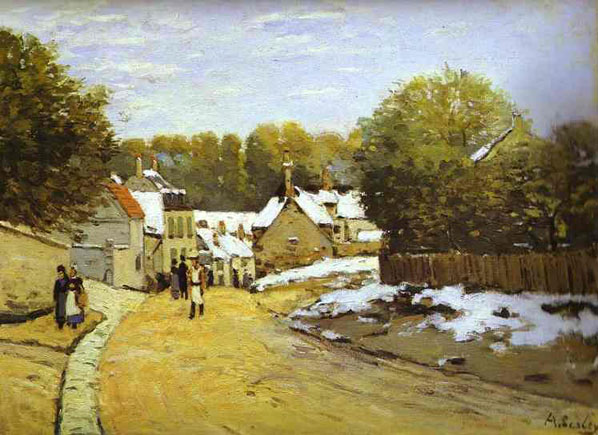
Ferry to the Ile-de-la-Loge Flood: 1872

Foggy Morning Voisins: 1874
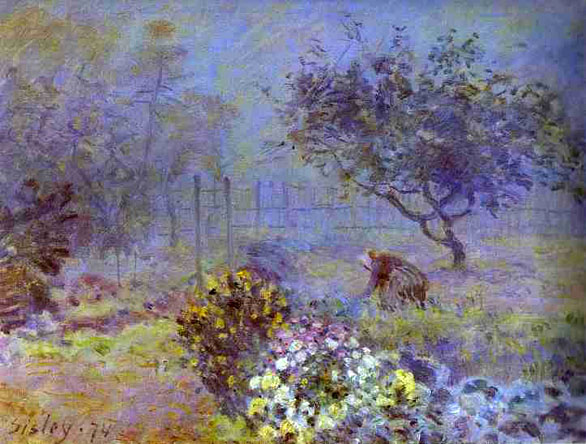
Footbridge at Argenteuil: 1872
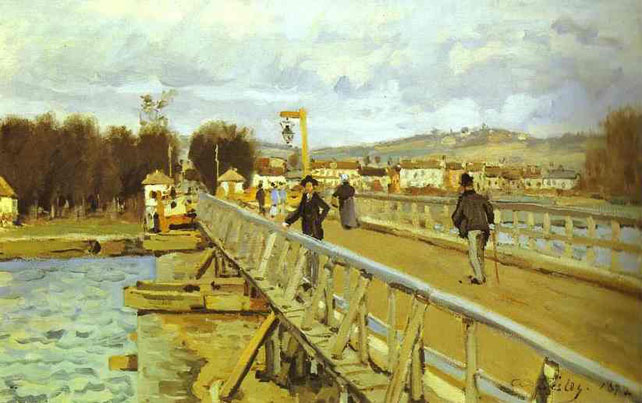
Frost in Louveciennes: 1873
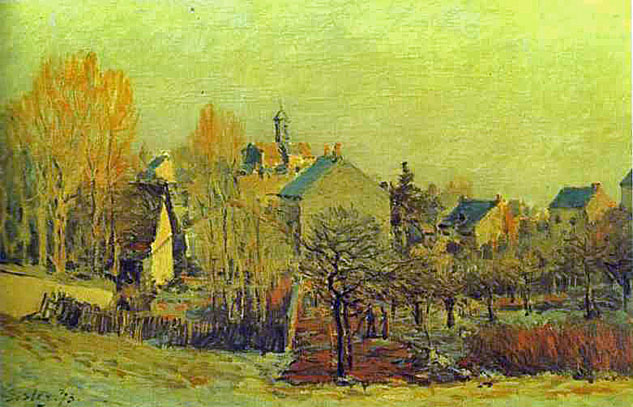
Garden Path in Louveciennes
(Chemin de l'Etarche): 1873
_1873.jpg)
Landscape at Louveciennes: 1873
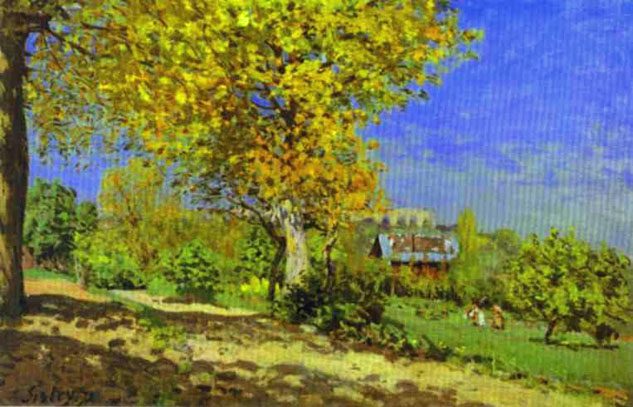
La Grande-Rue - Argenteuil: 1872
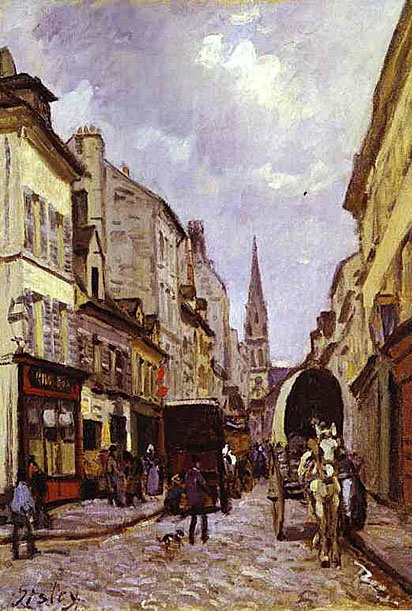
Langland Bay Storr's Rock Morning: 1897
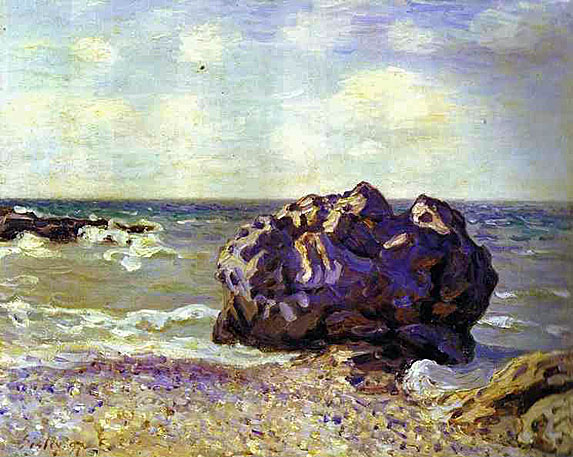
Le Chemin de Montbuisson a Louveciennes

Le village des Sablons
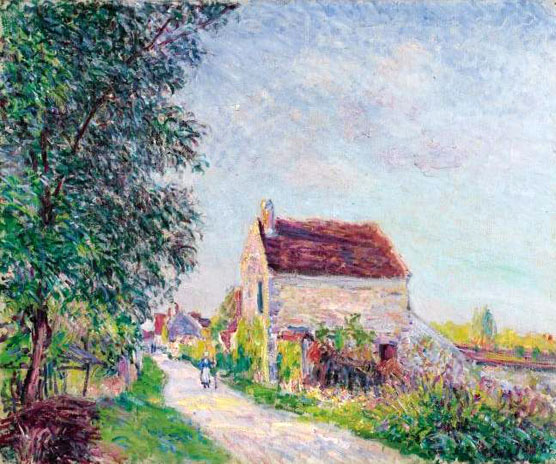
Louveciennes: 1876
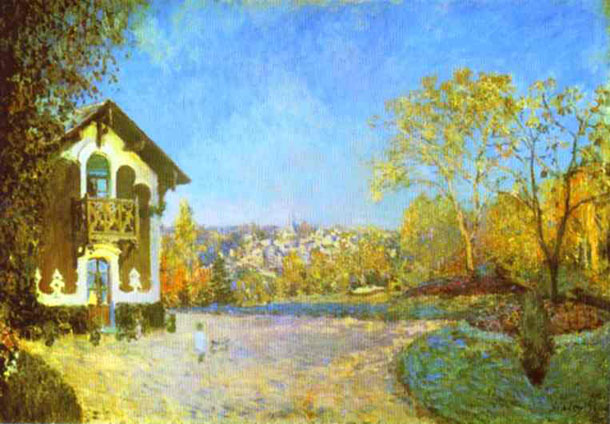
Market Place at Marly: 1876
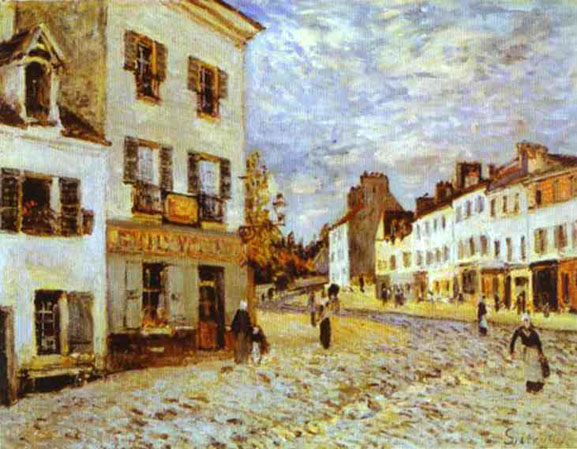
Matrat's Boatyard - Moret-sur-Loing: 1883
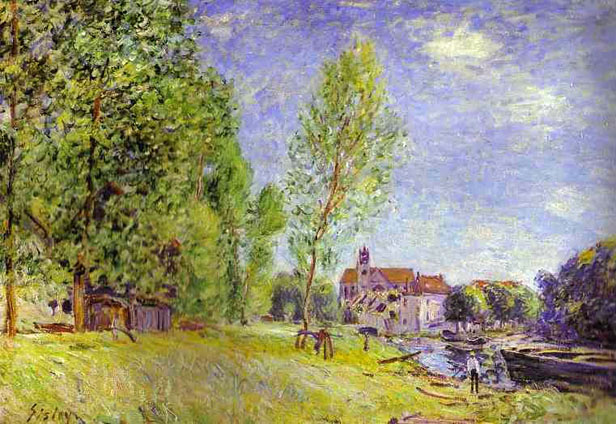
Molesey Weir Morning: 1874
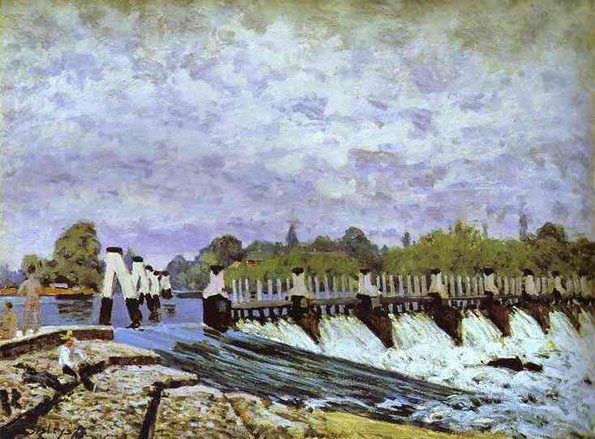
Moret-sur-Loing: 1891
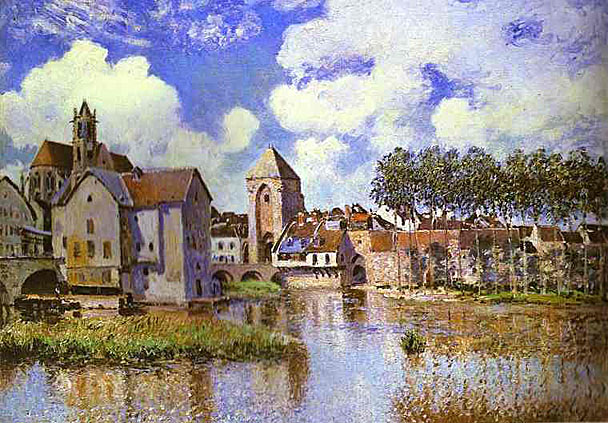
Moret-sur-Loing in Morning Sun: 1888
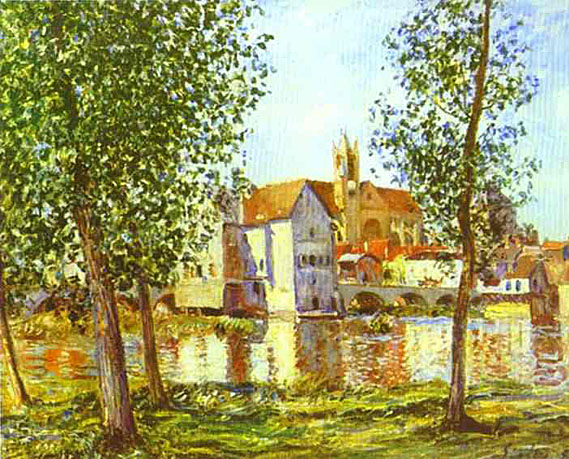
Orchard in Spring: 1881
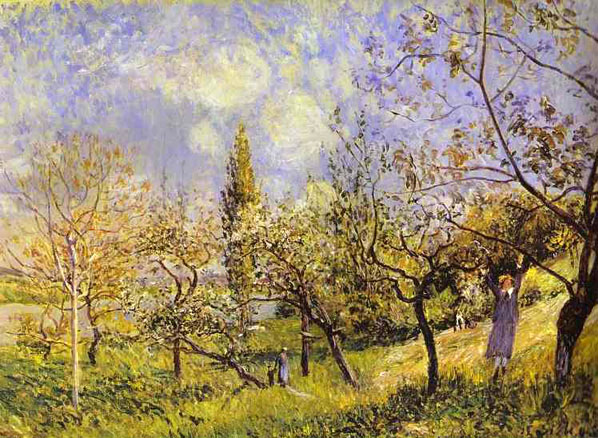
Provencher's Mill at Moret: 1883
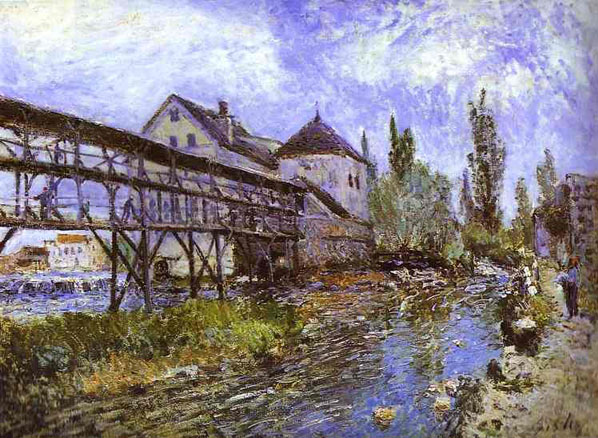
Regatta at Hampton Court: 1874
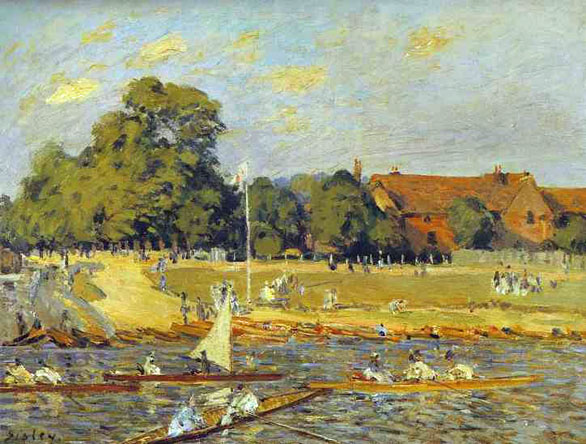
Regattas at Molesey: 1874
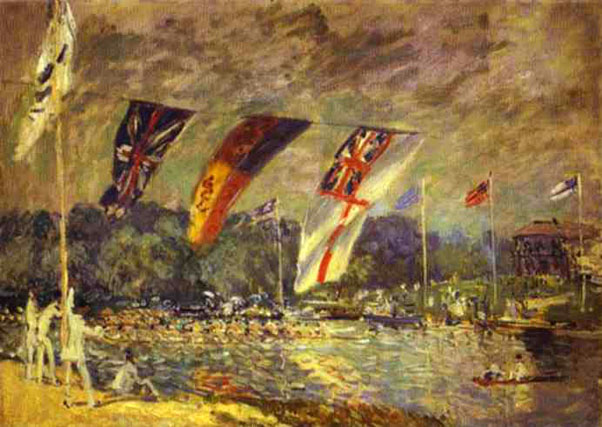
River Banks at Saint Mammes: 1884
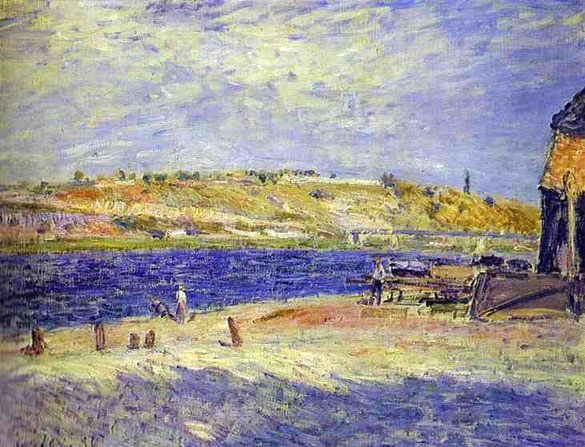
Rue de la Princesse Louveciennes
(Formerly Street in Ville d'Avray): 1873
_1873.jpg)
Sentier de la Mi-cote Louveciennes: 1873
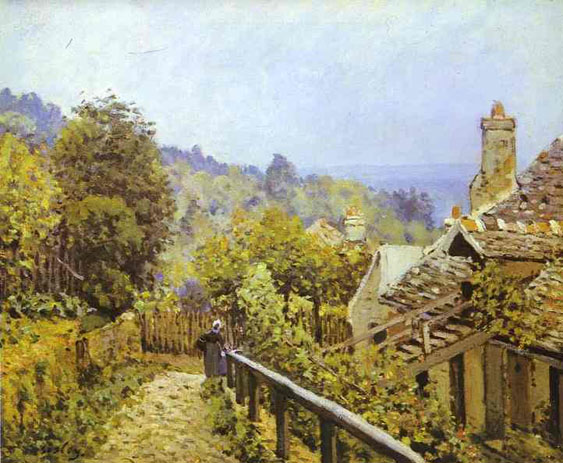
Small Meadows in Spring: 1881
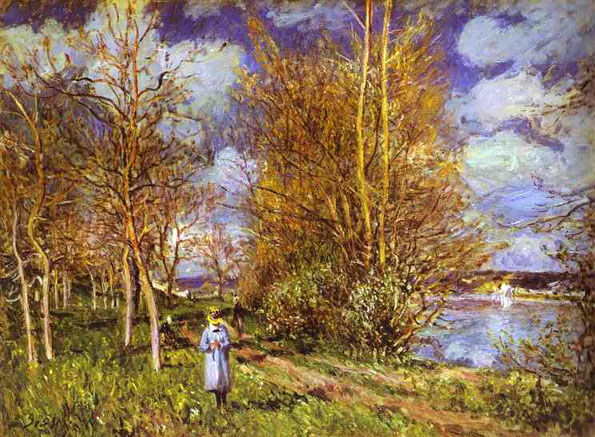
Snow at Louveciennes: 1875
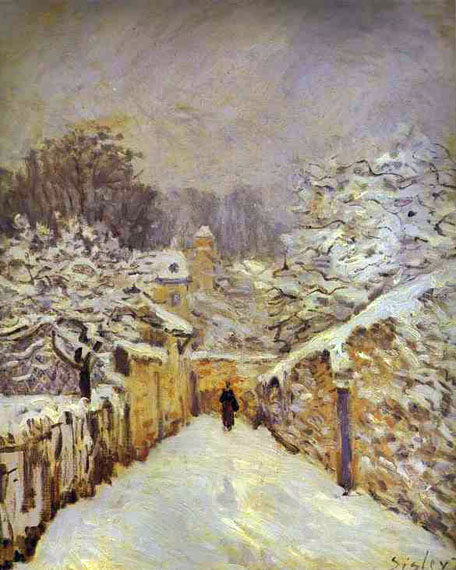
Snow on the Road Louveciennes
(Chemin de la Machine): 1874
_1874.jpg)
Snow Scene Moret Station: 1888
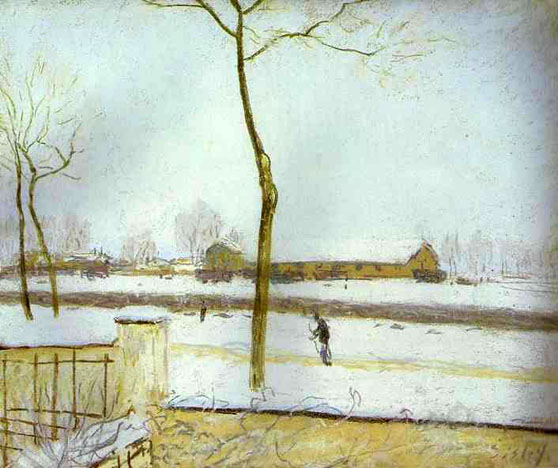
Snowy Weather at Veneux-Nadon: 1880
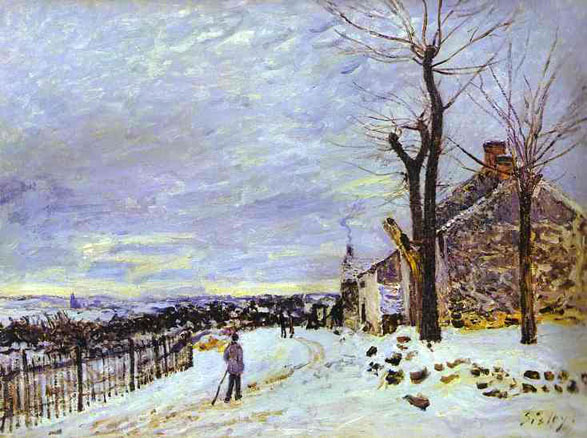
Square in Argenteuil
(rue de la Chaussee): 1872
_1872.jpg)
Station at Sevres: 1879

Still Life with Heron: 1867
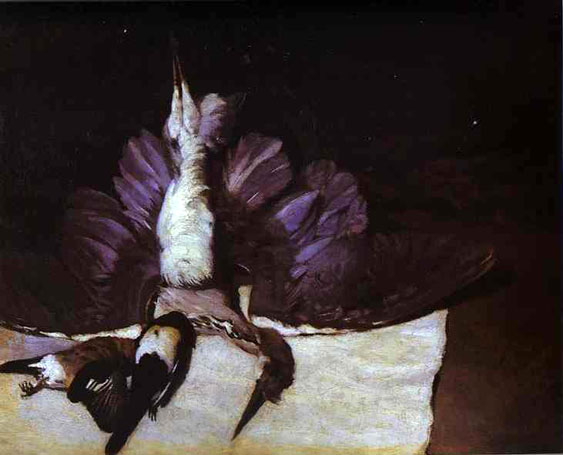
Street in Louveciennes
(rue de la Princesse): 1874
_1874.jpg)
The Aqueduct at Marly: 1874
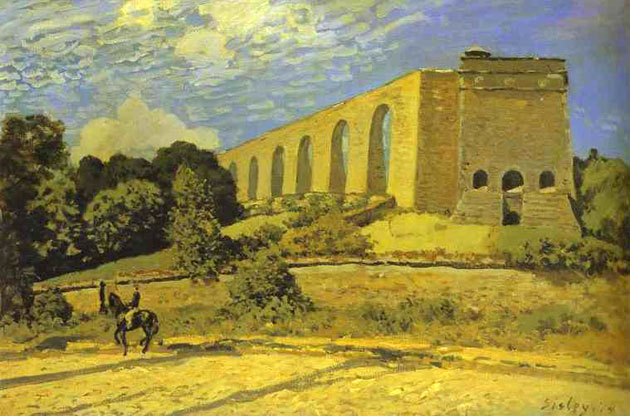
The Canal du Loing at Moret: 1892

The Canal du Loing at Saint Mammes: 1885

The Church at Moret in Morning Sun: 1893

The Forge at Marly-le-Roi
(Yvelines): 1875
_1875.jpg)
The Garden of Hoschede Montgeron: 1881

The Island of Saint-Denis: 1872

The Lesson: 1874
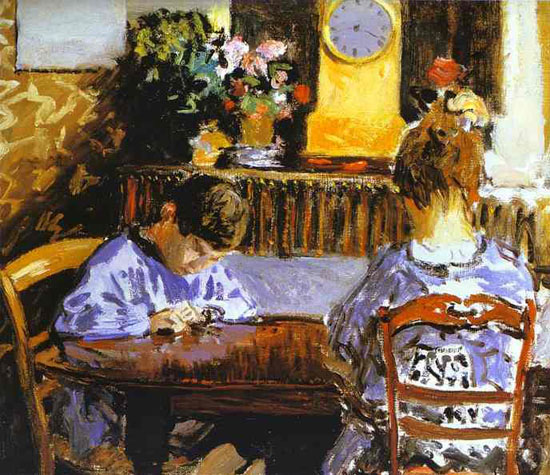
The Machine at Marly: 1873

The Saint Martin Canal in Paris: 1870
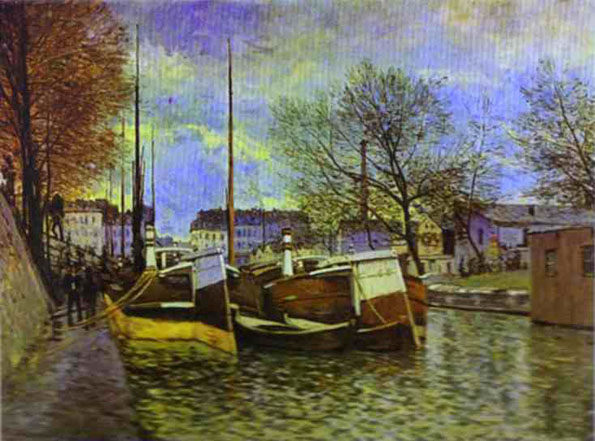
The Saint-Martin Canal: 1872
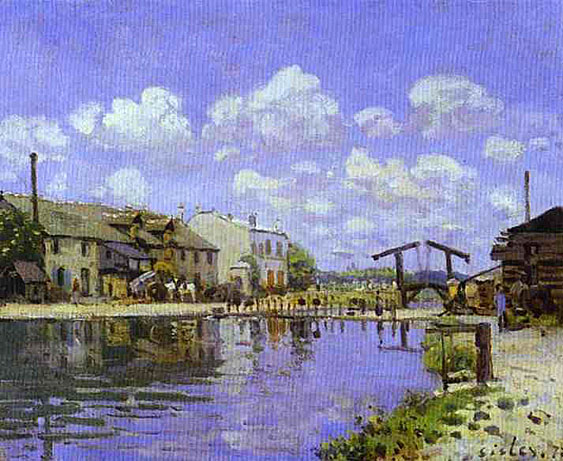
The Saint-Martin Canal in Paris: 1870
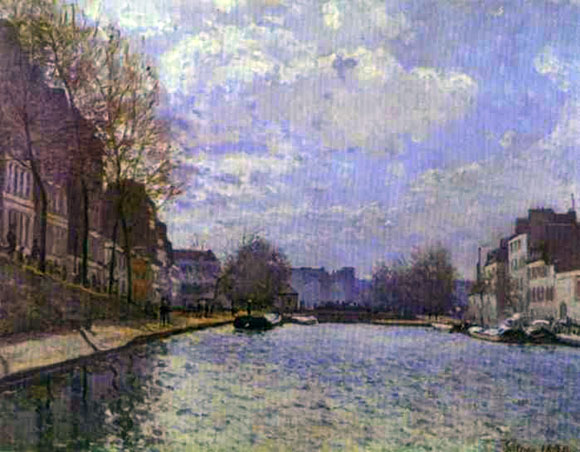
The Seine at Suresnes: 1877

Under the Bridge at Hampton Court: 1874
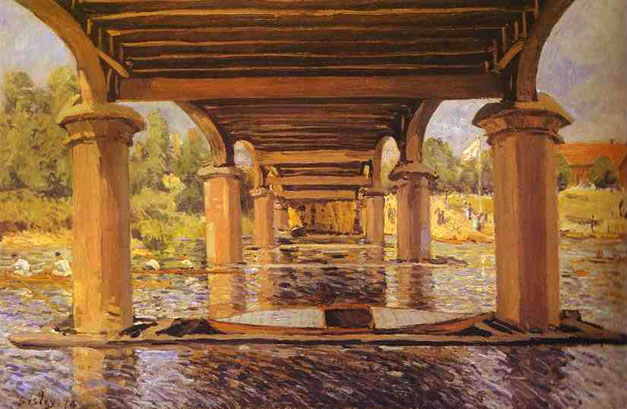
View in Moret
(rue des Fosses): 1892
_1892.jpg)
View of Marly-le-Roi Sunshine
(Formerly View of St-Cloud): 1876
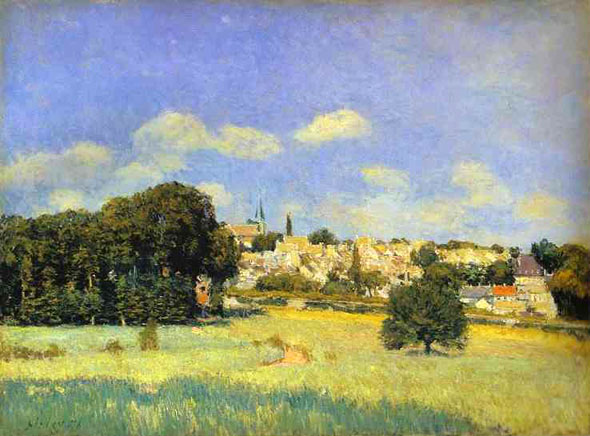
View of Montmartre from the cite des Fleurs: 1869
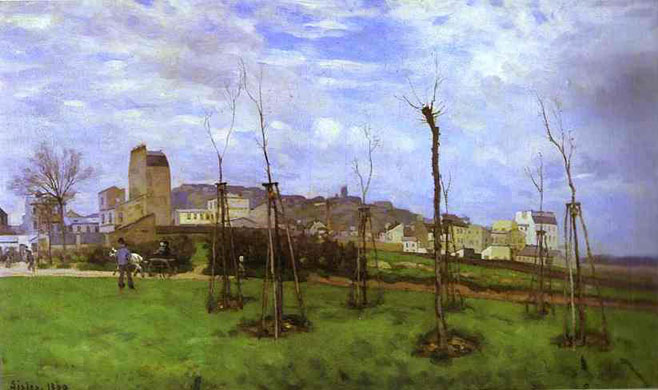
Village on the Banks of the Seine
(Villeneuve-la-Garenne): 1872
_1872.jpg)
Village Street in Marlotte: 1866
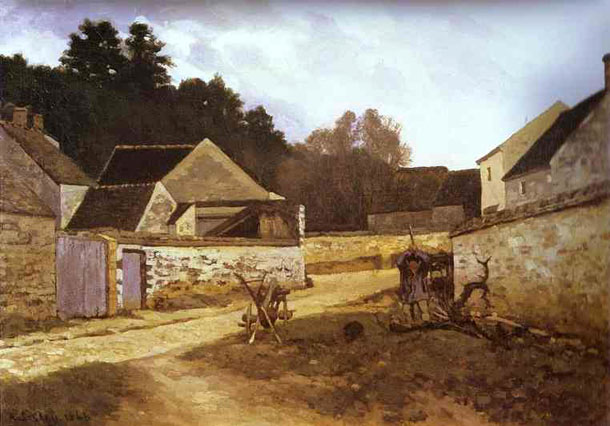
Windy Day at Veneux: 1882
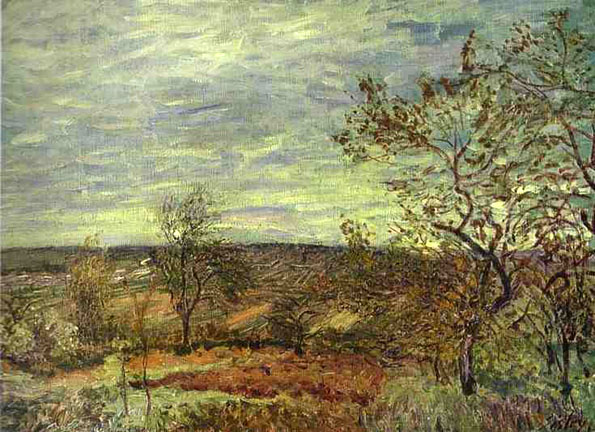
Women Going to the Woods: 1866
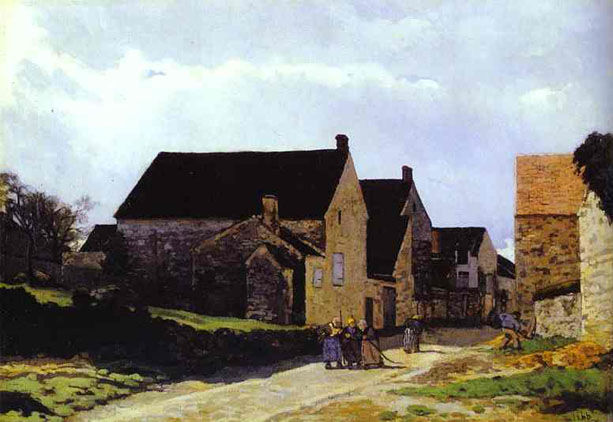
Boatyard at Saint-Mammes: 1885

Bridge over the Orvanne near Moret: 1883

Edge of Fountainbleau Forest - June Morning: 1885
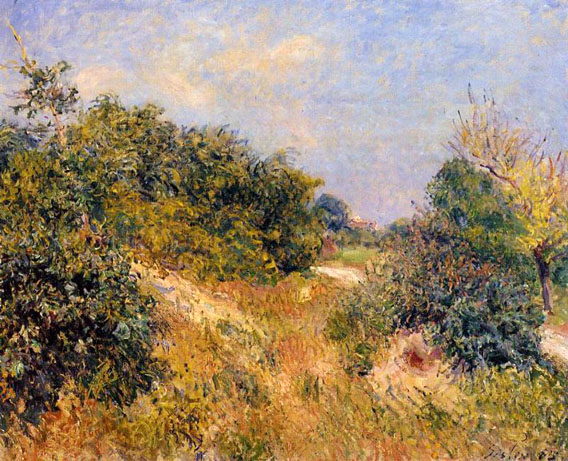
Footpath in the Gardens at By: ca 1881
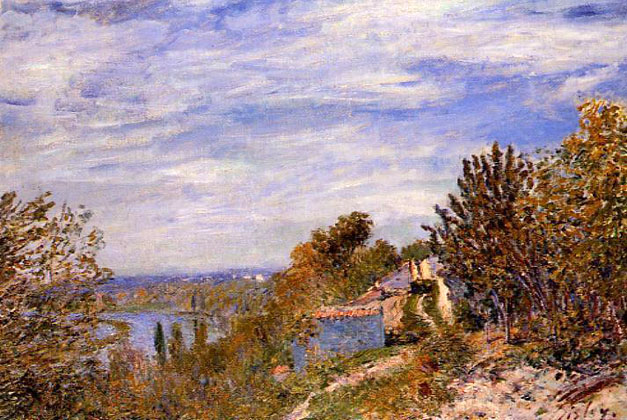
Haystack: 1877
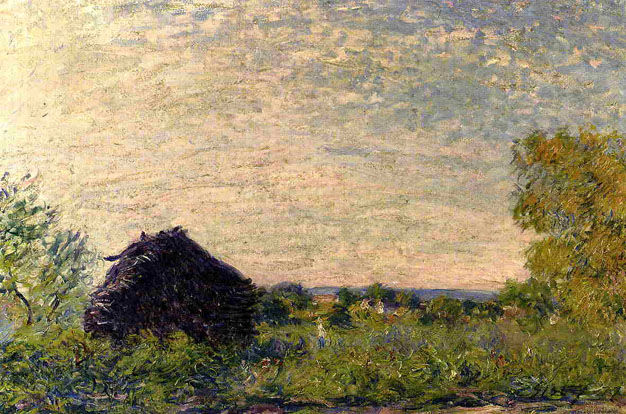
Haystacks: 1895

Inn at East Molesey with Hampton Court Bridge: 1874

Lady's Cove before the Storm (Hastings): 1897
_1897.jpg)
On the Cliffs - Langland Bay, Wales: 1897

Neighborhood Street in Louveciennes
(aka Rue de Village - Voisins to Louveciennes): 1872
_1872.jpg)
Rowers: 1877
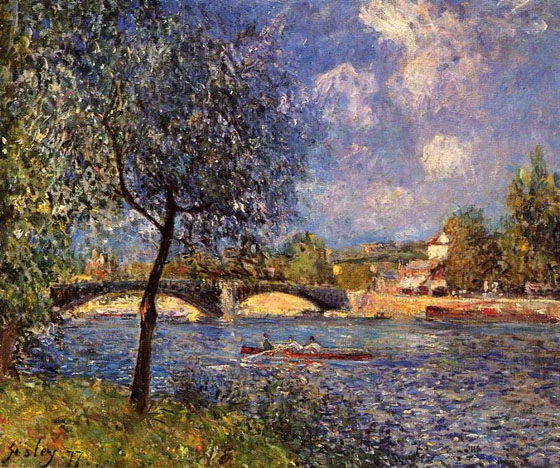
Rural Guardsman in the Fountainbleau Forest: 1870

Sevres Bridge: 1877
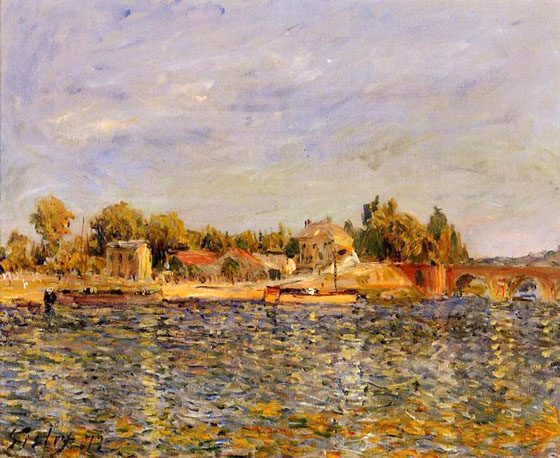
The Rising Path: 1875
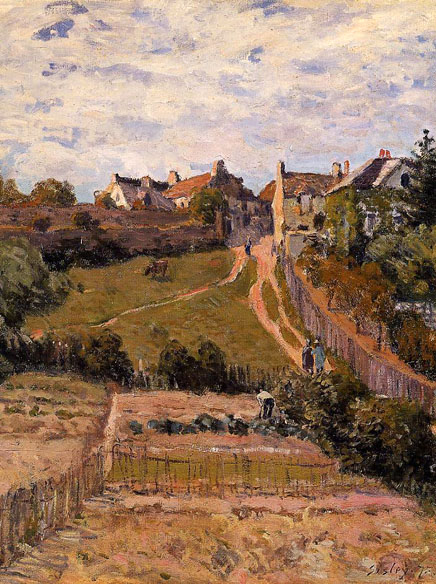
The Seine at Grenelle: 1878
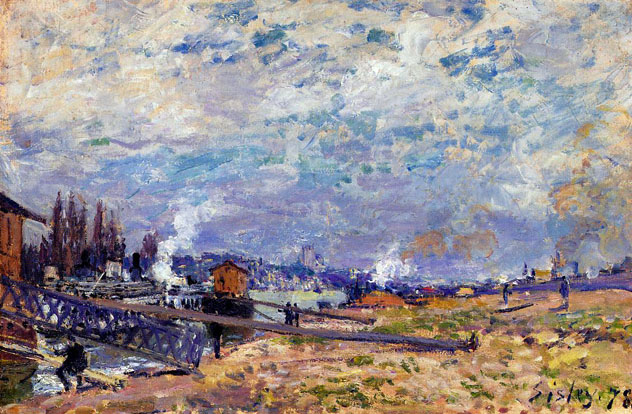
The Moret Bridge and Mills under Snow: 1890
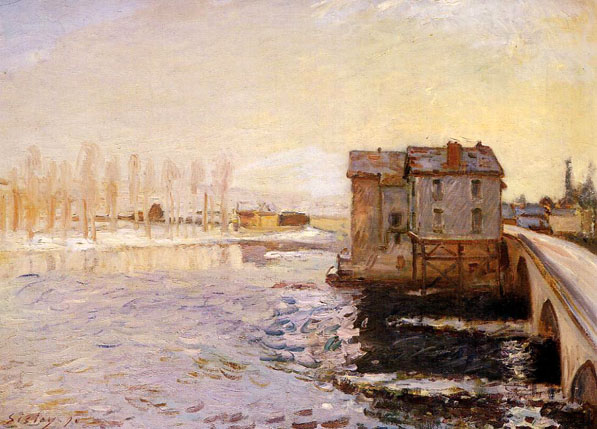
The Path from Veneux to Thomery along the Water, Evening: 1880

Source: Art Renewal Center
Source: WebMuseum: Alfred Sisley
This page is the work of Senex Magister
Return to Pagina Artis
Return to Bruce and Bobbie's Main Page.
.jpg)
.jpg)

_1875.jpg)


_ca_1888.jpg)



_1877.jpg)












_1873.jpg)
















_1873.jpg)



_1874.jpg)


_1872.jpg)


_1874.jpg)




_1875.jpg)









_1892.jpg)


_1872.jpg)










_1897.jpg)

_1872.jpg)






